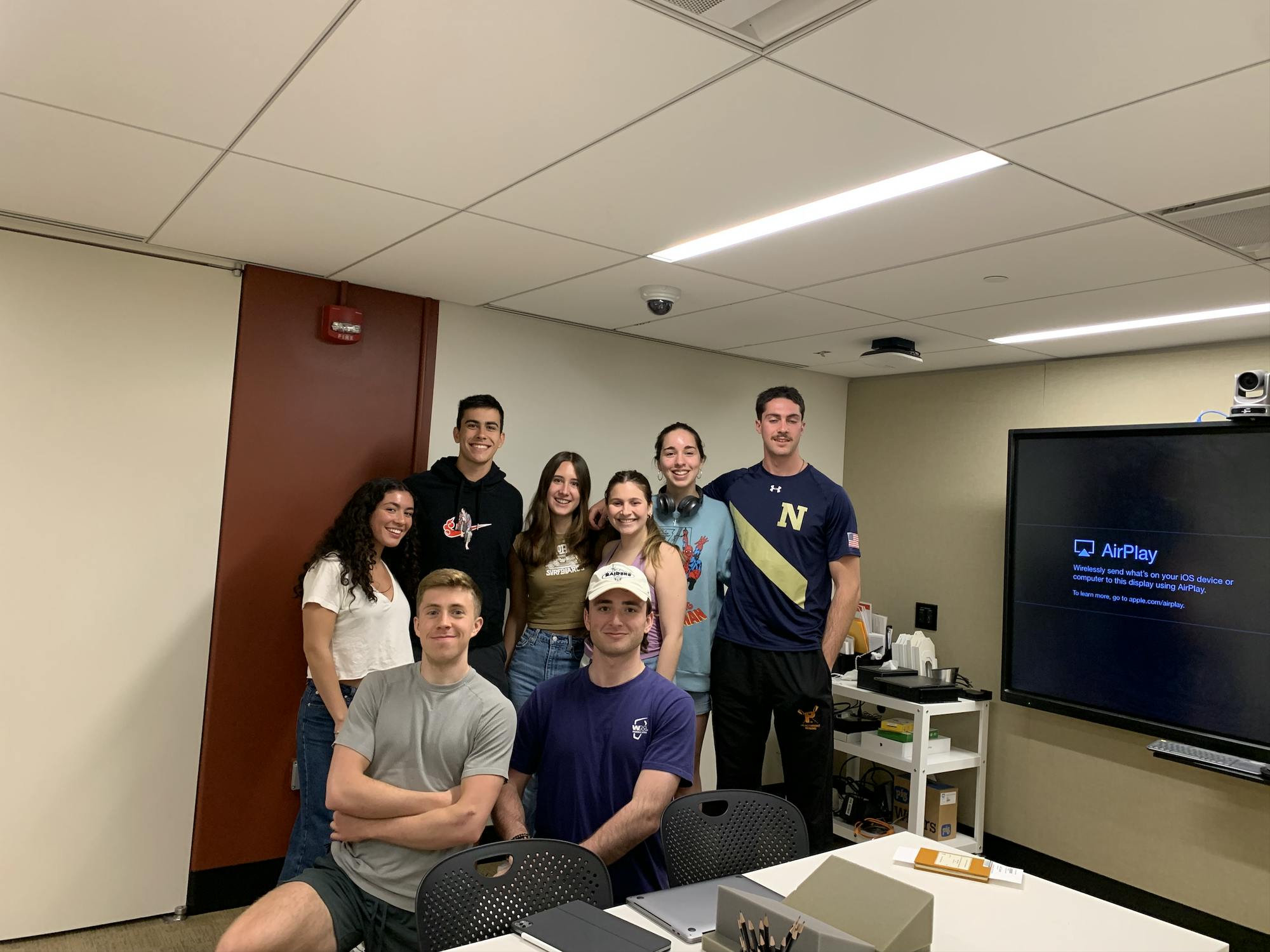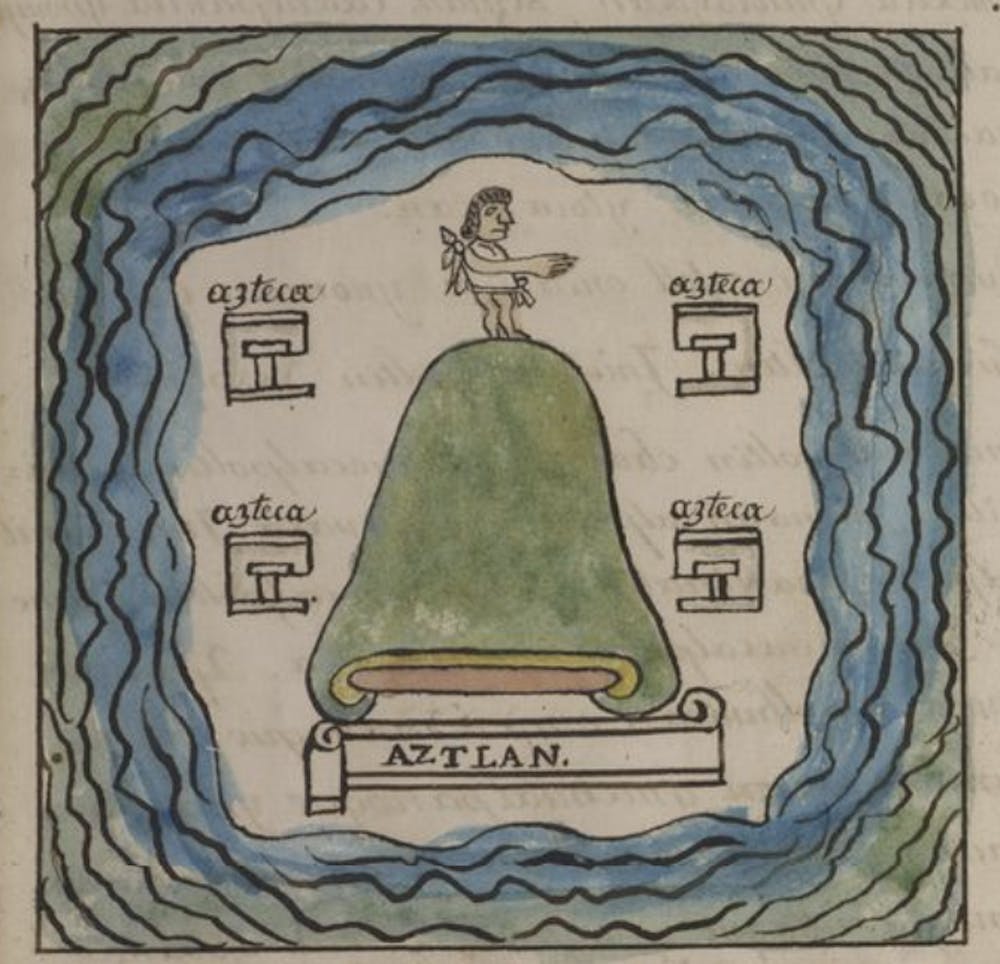Three floors under Firestone Library in Special Collections, a group of Princeton first-year students are translating a collection of largely untouched documents from Nahuatl — an endangered, indigenous Mesoamerican language — into English.
In 1949, Robert Garrett, Class of 1897, donated 18 Mesoamerican manuscripts and documents to the Princeton University Library (PUL). Spanning from the 16th to 20th centuries, the donation included pictorial manuscripts, maps and land documents written in Latin, Spanish, and Nahuatl, an Aztec language native to the Nahua people of central Mexico.
Since Garrett’s donation, PUL has now digitized 236 Mesoamerican items.
Many of these manuscripts have remained untranslated, until professor Nadia Cervantes Pérez, a lecturer in the department of Spanish and Portuguese and current instructor of FRS152: Translating Mesoamerica, recently began working on them last year.
In 2023, Pérez received a Magic Grant from the Humanities Council for her project, “Translating Mesoamerica: Learning about Indigenous Cultures through Princeton’s Nahuatl Documents from Colonial Mexico & Central America.”
Although Pérez does not identify as indigenous, she explained that she was interested in learning more about Nahua culture to understand her own Mexican heritage.
“I wanted to see what parts of my culture had those roots and how we still have them today,” Pérez said.
The goal of the project is to produce an open-access platform that provides contextual information about the Mesoamerican collection at Princeton University Library. Native speakers, postdoctoral researchers, and students will collaborate to create content for the platform.

“I’m trying not to be the one that provides knowledge, but the one that learns with them,” Pérez explained.
The platform has served as the foundation for Pérez’s Translating Mesoamerica freshman seminar. In the course, students learn about how Spanish colonialism impacted indigenous communities of Mesoamerica, with a specific focus on Nahua people.
Although some students, like Amanda Hugas ’27, had never studied Nahua culture, readings have helped them to understand the history of colonialism in Mesoamerica.
“In the beginning of the semester, we would go over our readings that we’ve done. So we often have explored the relationship of what colonialism did to the Nahua culture, how it was affected, how it was transformed,” Hugas said. “So we did lots of readings exploring that relationship between the conquistadors and the Nahua natives.”

Each week, students also engage with Mesoamerican archival materials in Special Collections to understand Nahua history.

Translating Mesoamerica students gather in Firestone.
Courtesy of Nadia Cervantes Pérez.
For students like Alexandra Montgomery ’27, trips to Special Collections are essential to the learning experience.
“When you’re looking at these old manuscripts, it’s easy to assume that the little details don’t mean anything,” she explained. “But when you look closer at it, everything has a deeper cultural meaning behind it. It’s really cool to just look at a culture with a worldview that’s different from the Western worldview and analyze how that different worldview impacts everything about their systems of writing, their symbols, their language.”
According to Alanna Radlo-Dzur, a postdoctoral research associate in the Department of Art and Archaeology, there are approximately 1 to 1.5 million Nahuatl speakers in Mexico and around the globe. As an endangered language, the revitalization of Nahuatl represents a “means of reclaiming sovereignty and expressing sovereignty for indigenous communities all over the Americas,” Radlo-Dzur explained.
This semester, students have been challenged to develop skills in transcribing and translating Nahuatl manuscripts.
“Nahuatl is completely different as a language from the Romance languages that a lot of people are familiar with. The whole grammatical structure is different. Some of the sounds don’t exist in romance languages,” Montgomery noted.
Nahuatl is an agglutinative language, which means that phrases that would require sentences in English can be expressed in one word in Nahuatl. Once a week, students learn and review Nahuatl grammar to help them understand Nahuatl manuscripts.
“It’s definitely a very different experience translating and transcribing knowledge. But it’s been really rewarding to figure it out in the class,” Montgomery added.
Additionally, students must research and analyze an archival object from Nahua civilization for the final group project.
Montgomery and Hugas are working on transcribing a Nahua land deed together. Other pairs will examine documents such as maps and the Bible.
“I’m really excited to look forward to the whole context of where these pieces came from, and how much we can discover,” Hugas said.
Pérez would like to teach more courses similar to Translating Mesoamerica in the future. “It would be interesting, and it would be useful if Princeton could offer classes in indigenous language as well,” she added.
By examining Nahuatl manuscripts, students grasp the value of Nahua civilization that has been hidden by Spanish colonialism.
“I think it’s an incredibly important thing to learn as a college student because indigenous people, especially in the Americas, have been very erased from the public consciousness,” said Montgomery.
Over time, Westernization has decreased the visibility of indigenous cultures in Mesoamerica, but Translating Mesoamerica emphasizes “a change in attitude within the scholarly community of being able to recognize that other ways of knowing, understanding the world and our place in it are of equal value,” Radlo-Dzur explained.
For Hugas, Translating Mesoamerica has transformed her understanding of the role of indigenous culture in history and the importance of learning “how history is preserved and how people will look back on your culture hundreds of years from now.”
“More than anything I want students to take away to value respect and understand how important our cultural diversity is,” Pérez echoed.
Synai Ferrell is a contributing Features writer and staff Podcast writer at the ‘Prince.’
Please direct any corrections requests to corrections[at]dailyprincetonian.com.








